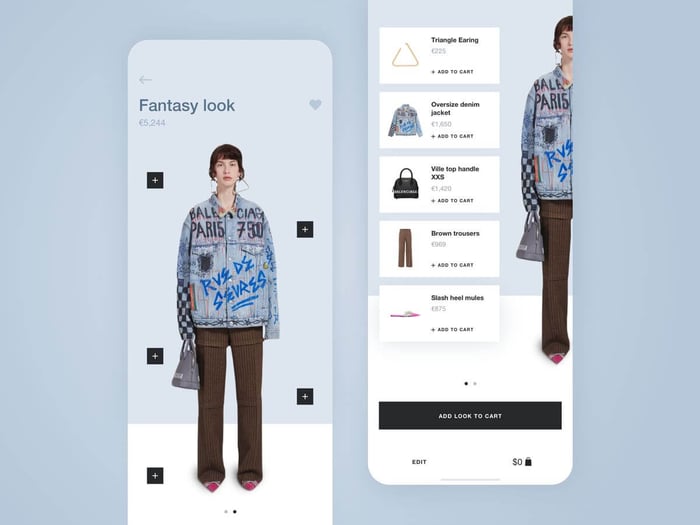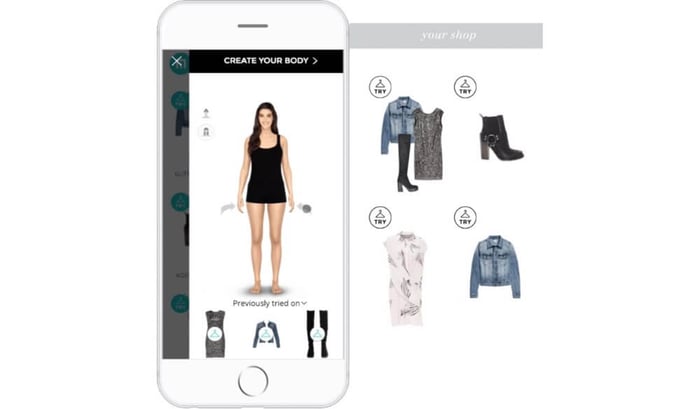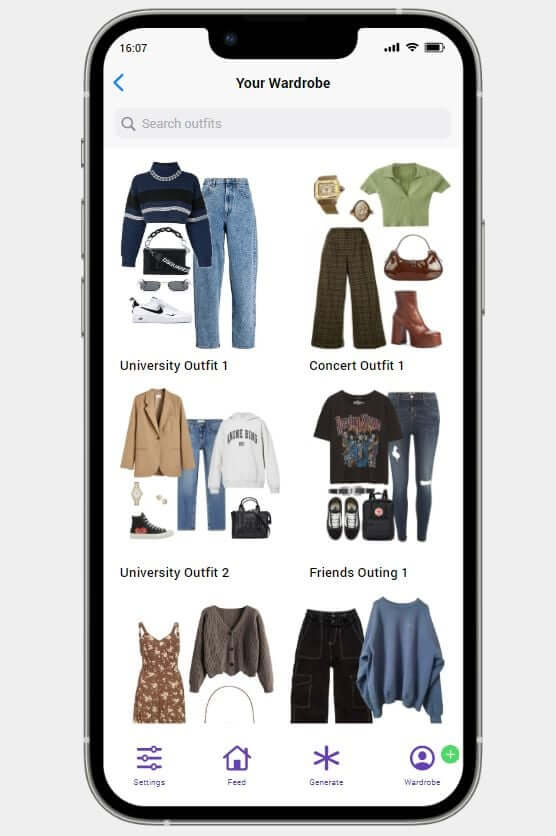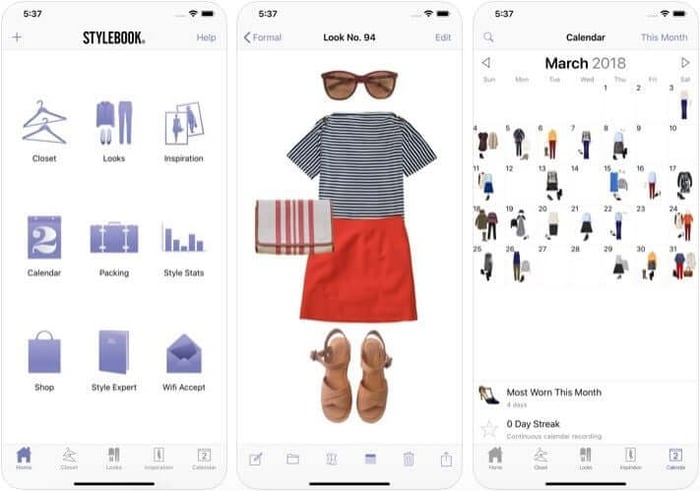How Virtual Fitting Room Technology Is Changing Shopping
Table of Contents
- How the Technology Works Behind the Scenes
- Benefits That Transform the Shopping Journey
- Leading Platforms Powering Virtual Try-On Experiences
- How Retailers Implement Virtual Fitting Room Technology
- Real-World Use Cases Across Fashion and Beyond
- Overcoming the Challenges and Limitations
- What the Future Holds for Virtual Fitting Room Innovation
- Why Now Is the Time to Embrace It?
- FAQ: Virtual Fitting Room Technology
Virtual fitting room technology is a miz between 3D technology, AI, augmented reality and data analysis in order to simulate a real fitting room in which consumers can try on whaever clothes they want without having to touch them.
This is an iniciative that reduces size mismatches and improves customer confidence before checkout, lowering return rates and increasing satisfaction. Virtual fitting room technology also integrates with product pages and mobile apps, enabling seamless experience across devices and touchpoints.

How the Technology Works Behind the Scenes
This fitting room innovation combines real-time 3D body modeling with advanced computer vision to simulate garment fitting. Shoppers upload a photo, scan their body via a smartphone app, or enter measurements manually, enabling the system to build a virtual avatar. Once created, the user’s digital twin can try on multiple clothing items instantly, providing a realistic sense of fit, length, and drape.
Through sophisticated algorithms, virtual fitting room technology processes data like body shape, fabric flexibility and even posture to simulate how clothing would behave on a real body in normal conditions. Some platforms use machine learning to improve accuracy over time by analyzing return rates, customer feedback and body data patterns. This continuous learning loop helps refine sizing recommendations and improve the visual accuracy of garments across various body types. For retailers, this backend process integrates seamlessly into websites or apps, making the shopping journey more interactive without disrupting the user experience.

Benefits That Transform the Shopping Journey
For consumers, the ability to visualize how clothing fits before purchasing eliminates uncertainty and reduces frustration, especially when shopping across brands with inconsistent sizing. Instead of relying solely on static size charts or customer reviews, shoppers can interact with a dynamic, personalized fitting experience that mimics real-life trying-on.
This added confidence often leads to higher conversion rates and fewer product returns, two crucial KPIs for any e-commerce operation. On the retailer side, virtual fitting room technology brings measurable ROI by optimizing the supply chain, minimizing restocking costs, and providing behavioral insights into what styles or fits work best for different demographics. Additionally, sustainability goals are supported by reducing the environmental impact of returns, excess shipping, and wasted inventory. The technology also enriches customer engagement, with data showing that users spend more time on product pages that include virtual try-on features, which can lead to larger cart sizes and repeat purchases.
Leading Platforms Powering Virtual Try-On Experiences
Building a strong ecommerce brand is one of the smartest ways to grow your online business and stay competitive. In today’s crowded digital marketplace, customers have endless choices, so a great product alone isn’t enough. What really sets successful stores apart is branding that builds trust, recognition, and emotional connection.
A powerful ecommerce brand identity helps people remember you, relate to your values, and feel confident buying from you again and again. It’s not just about logos or colors — it’s about creating a consistent story that runs through your website, social media, product packaging, and customer experience.
Whether you’re launching a DTC fashion brand, a lifestyle startup, or managing a large online marketplace, your brand is your biggest asset. It influences how customers find you, how they engage with your content, and how loyal they become over time.
In this blog, we’ll break down what branding for ecommerce really means, how to craft a digital identity that stands out, and proven strategies to help your business grow stronger, faster, and more recognizable online.

How Retailers Implement Virtual Fitting Room Technology
Bringing this innovative technology into a retail environment requires a thoughtful, phased approach. The first step is choosing the right vendor that aligns with business goals and platform architecture. Once selected, integration begins by embedding the virtual fitting room system into product pages or mobile shopping apps.
Retailers may need to collect user data such as body measurements, photos or survey responses to fuel avatar creation and sizing algorithms. Some systems offer direct plug-ins for platforms like Shopify or Magento, while others provide custom development. Testing is crucial, companies run A/B tests to monitor changes in conversion rates, cart abandonment, and product return rates. Customer support teams also receive training to assist users with navigation, privacy concerns, and avatar setup. Over time, ongoing data analysis and user feedback help optimize the experience and refine the predictive models behind virtual fitting room technology.
Real-World Use Cases Across Fashion and Beyond
Small shops across all sectors are adopting virtual fitting room technology to enhance the shopping experience and build customer trust. Luxury brands sometimes integrate more detailed avatar customization to reflect the personalized nature of their garments. Meanwhile, sportswear and athleisure companies simulate movements, such as stretching or running, to demonstrate how clothing performs in action.
Lingerie and swimwear stores benefit from increased privacy and comfort, allowing customers to virtually try on the fit without feeling exposed. Department stores, on the other hand, use the technology to maintain a unified experience across their digital and physical channels, often employing augmented reality mirrors or touchscreens in fitting areas.
Also, beyond clothing, this technology extends to eyewear, accessories, and even furniture, where customers benefit from a realistic visualization of scale and fit before making a purchase.

Overcoming the Challenges and Limitations
Despite its benefits, virtual fitting room technology still faces several technical and practical challenges. One of the biggest hurdles is achieving realistic fabric simulation, as different materials behave uniquely depending on body movement, gravity and tension.
Another challenge is that many platforms simplify these dynamics, which may lead to discrepancies between the virtual and physical experience. Additionally, the need for user-provided data, like photos or body measurements, can raise privacy concerns, particularly in regions with strict data protection regulations.
What the Future Holds for Virtual Fitting Room Innovation
Looking ahead, the evolution of this technology promises even more immersive and intelligent experiences. Advances in motion capture will enable virtual avatars to walk, sit, or turn naturally, showcasing how garments respond in dynamic situations. Companies are also exploring haptic feedback, allowing users to feel fabric textures through wearables or smart devices. Artificial intelligence will continue to refine sizing algorithms, generating hyper-personalized recommendations based on not only body shape, but also style preferences and past purchases. Integration with virtual reality (VR) and mixed reality environments could lead to fully immersive shopping spaces, where users browse digital showrooms and try on outfits in lifelike 3D. As virtual fitting room technology converges with smart mirrors, voice assistants, and AR glasses, it’s poised to become a central component of both online and in-store retail experiences. For consumers, this means more control, accuracy, and enjoyment in the buying journey.

Why Now Is the Time to Embrace It?
In today’s competitive digital retail landscape, staying ahead means adopting tools that deliver both value and convenience to the customer. Virtual fitting room technology accomplishes just that, it bridges the sensory gap of online shopping, reduces returns, increases confidence, and enhances engagement. Brands that have implemented this solution are already seeing benefits in terms of user satisfaction, loyalty, and operational efficiency. As more shoppers expect personalized, interactive experiences, the demand for virtual try-on options will only grow. Retailers who hesitate risk falling behind, while those who innovate will stand out in a crowded marketplace. Whether you’re a fashion startup or a global retailer, now is the time to explore virtual fitting room technology as a cornerstone of your digital strategy. Begin with a pilot program, learn from user feedback, and scale intelligently. The future of retail is immersive, and this technology is your gateway to it.
Ready to elevate your shopping experience? Try it now with Modelia
FAQ: Virtual Fitting Room Technology
- What is virtual fitting room technology?
Virtual fitting room technology uses artificial intelligence, augmented reality, or 3D modeling to let shoppers try on clothes digitally. It allows customers to see how garments might look and fit without physically wearing them. - How does virtual fitting room technology work?
It works by scanning a user’s body measurements or using an uploaded photo or avatar. The system then overlays digital clothing onto the model, simulating fit, style, and movement in real time. - What are the benefits of virtual fitting rooms for fashion retailers?
They reduce return rates, improve customer confidence in purchases, and create engaging shopping experiences. Retailers can also save costs on physical inventory and photoshoots by showcasing digital outfits. - Can virtual fitting room technology be used online and in stores?
Yes, it can be integrated into e-commerce websites, mobile apps, or in-store smart mirrors. This flexibility makes it a powerful tool for both digital and physical retail environments.
How would you rate this article:
Related Articles
- Christmas Outfit Ideas for a Stylish Holiday Season
- Best Lighting for Product Photography: How to Capture Perfect Shots
- Virtual Jewelry Try-On: How AR Technology is Changing the Way We Shop for Jewelry
- Essential Flat Lay Photography Tips for Perfect Shots
- Top 5 Image Quality Enhancer to Sharpen & Improve Photos
- Content Marketing for Ecommerce: How to Attract and Retain Customers
- Best 10 Alternatives to X-Design for AI-Enhanced Fashion Content
- How Fashion Brands Can Succeed with Influencer Marketing
- The Rise of AI Beauty: Personalized Skincare in 2025
- Artificial Intelligence in Fashion: Transforming Design, Marketing and Modeling


